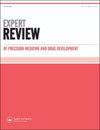Enasidenib用于治疗复发或难治性急性髓性白血病伴异柠檬酸脱氢酶2突变
IF 1.2
Q4 PHARMACOLOGY & PHARMACY
Expert Review of Precision Medicine and Drug Development
Pub Date : 2020-10-25
DOI:10.1080/23808993.2020.1831909
引用次数: 3
摘要
异柠檬酸脱氢酶2 (IDH2)是将异柠檬酸转化为α-酮戊二酸(αKG)的关键代谢酶。IDH2的体细胞点突变赋予胚细胞功能获得,导致d -2-羟基戊二酸(D-2HG)的过量产生。高浓度的细胞内D-2HG抑制α-酮戊二酸依赖的双加氧酶,包括组蛋白、DNA和RNA去甲基化酶,导致组蛋白、DNA和RNA超甲基化,并阻断细胞分化。体外和体内临床前研究表明,enasidenib抑制idh2突变酶可降低细胞内D-2HG水平,逆转表观遗传失调,并释放分化阻滞。美国食品和药物管理局(FDA)批准了一种用于复发或难治性(R/R) idh2突变AML患者的突变型idh2酶抑制剂enasidenib。我们回顾了AML中IDH2突变的生物学和预后意义,并讨论了enasidenib的药理学、临床疗效和毒性。我们强调正在进行的临床前和临床研究领域。专家意见Enasidenib获得FDA批准的原因是高反应率,反应的持久性,在大量预处理的人群中转化为令人印象深刻的OS。有希望的正在进行的临床试验正在评估与enasidenib一线联合治疗。本文章由计算机程序翻译,如有差异,请以英文原文为准。
Enasidenib for the treatment of relapsed or refractory acute myeloid leukemia with an isocitrate dehydrogenase 2 mutation
ABSTRACT Introduction Isocitrate dehydrogenase 2 (IDH2) is a key metabolic enzyme that converts isocitrate to α-ketoglutarate (αKG). Somatic point mutations in IDH2 confer a gain-of-function in blast cells resulting in overproduction of D-2-hydroxyglutarate (D-2HG). High intracellular concentrations of D-2HG inhibit α-ketoglutarate-dependent dioxygenases including histone, DNA and RNA demethylases, leading to histone, DNA and RNA hypermethylation, and cell differentiation blockade. In vitro and in vivo preclinical studies have demonstrated that inhibition of IDH2-mutant enzymes with enasidenib decrease intracellular D-2HG levels, reverse epigenetic dysregulation, and release the differentiation block. The US Food and Drug Administration (FDA) approved enasidenib, a mutant-IDH2 enzyme inhibitor for patients with relapsed or refractory (R/R) IDH2-mutated AML. Areas covered We review the biology and prognostic significance of IDH2 mutations in AML and discuss the pharmacology, clinical efficacy, and toxicity profile of enasidenib. We highlight areas of ongoing preclinical and clinical research. Expert opinion Enasidenib was FDA approved due to high response rates, durability of the responses that translated into an impressive OS in that heavily pretreated population. Promising ongoing clinical trials are evaluating combination therapies with enasidenib frontline.
求助全文
通过发布文献求助,成功后即可免费获取论文全文。
去求助
来源期刊

Expert Review of Precision Medicine and Drug Development
PHARMACOLOGY & PHARMACY-
CiteScore
2.30
自引率
0.00%
发文量
9
期刊介绍:
Expert Review of Precision Medicine and Drug Development publishes primarily review articles covering the development and clinical application of medicine to be used in a personalized therapy setting; in addition, the journal also publishes original research and commentary-style articles. In an era where medicine is recognizing that a one-size-fits-all approach is not always appropriate, it has become necessary to identify patients responsive to treatments and treat patient populations using a tailored approach. Areas covered include: Development and application of drugs targeted to specific genotypes and populations, as well as advanced diagnostic technologies and significant biomarkers that aid in this. Clinical trials and case studies within personalized therapy and drug development. Screening, prediction and prevention of disease, prediction of adverse events, treatment monitoring, effects of metabolomics and microbiomics on treatment. Secondary population research, genome-wide association studies, disease–gene association studies, personal genome technologies. Ethical and cost–benefit issues, the impact to healthcare and business infrastructure, and regulatory issues.
 求助内容:
求助内容: 应助结果提醒方式:
应助结果提醒方式:


